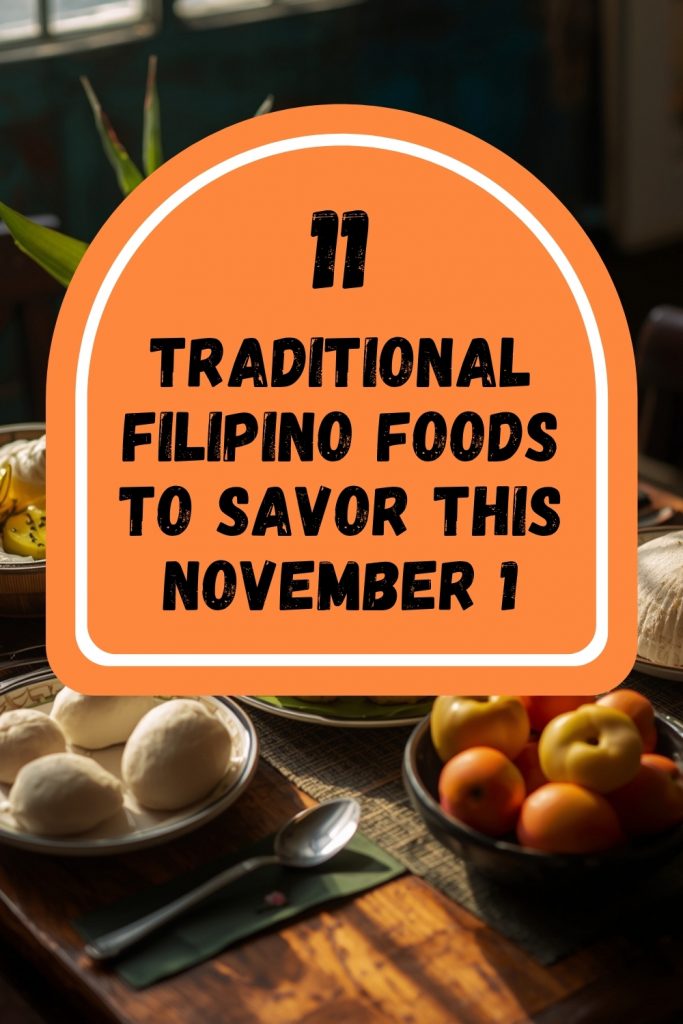
As November 1 approaches, Filipino homes fill with the comforting aroma of food that brings families together. On All Saints’ Day, we honor loved ones who’ve passed not just with prayers, but with dishes that carry memories of togetherness and tradition. From sweet kakanin to hearty stews, these timeless recipes remind us of our roots and the warmth of Filipino culture.
Here are 11 traditional Filipino foods to savor and celebrate with family this November 1.
Puto Bumbong
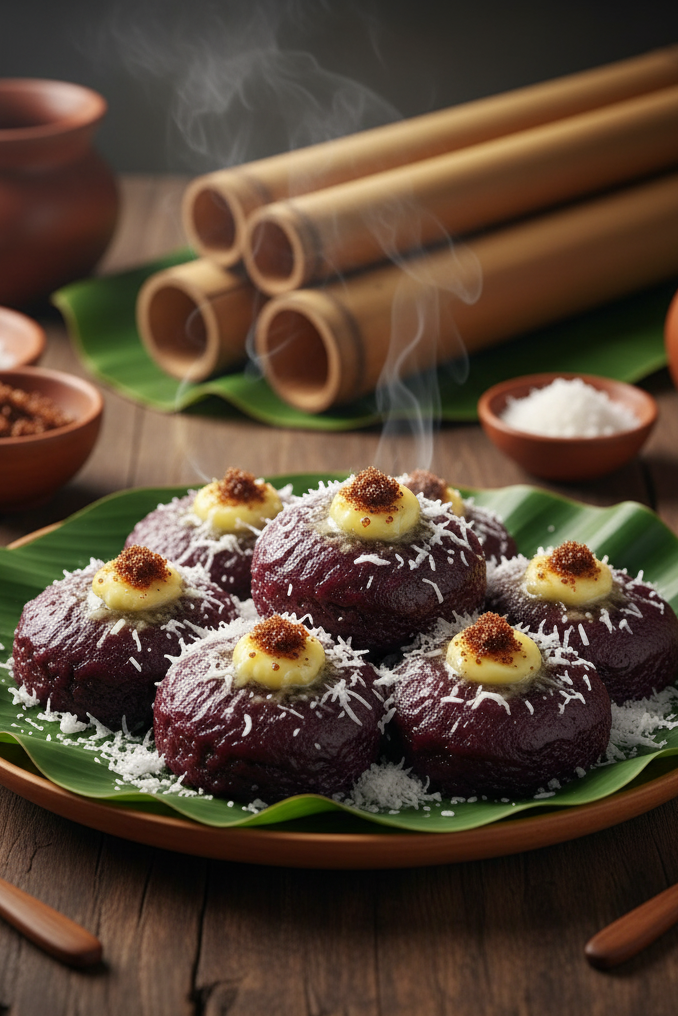
A beloved purple rice delicacy steamed in bamboo tubes, brushed with butter, sprinkled with sugar, and topped with grated coconut. Puto Bumbong fills the air with a nostalgic aroma during Undas, reminding Filipinos of church visits and quiet nights shared with family.
Bibingka
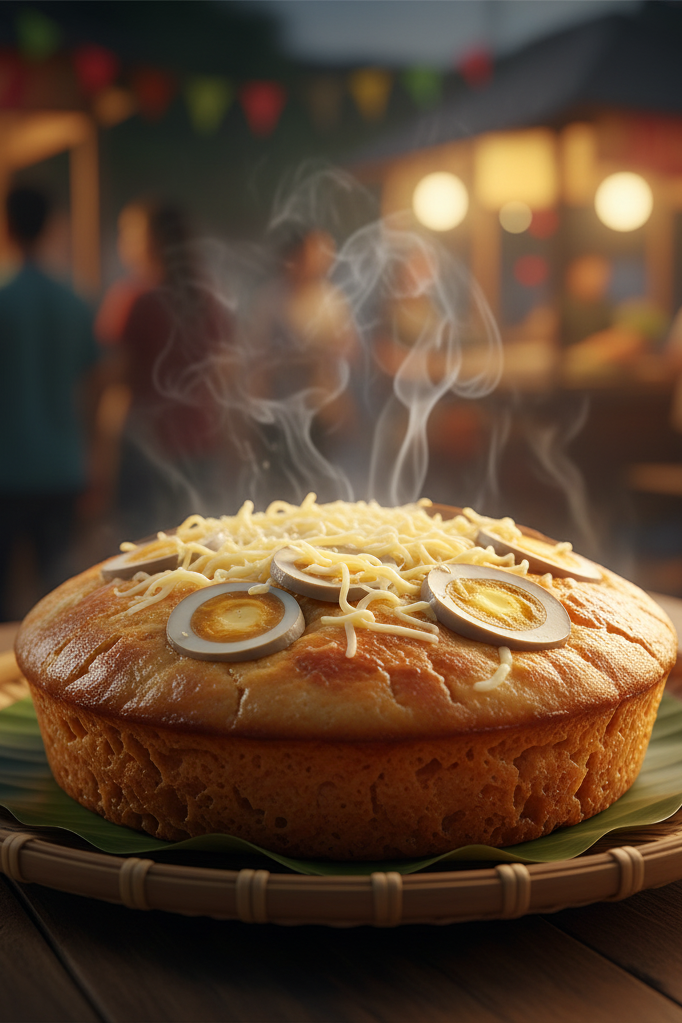
This soft, warm rice cake baked in clay pots lined with banana leaves captures the true essence of Filipino comfort food. Bibingka is usually eaten with family after visiting the cemetery sweet, smoky, and comforting.
Suman
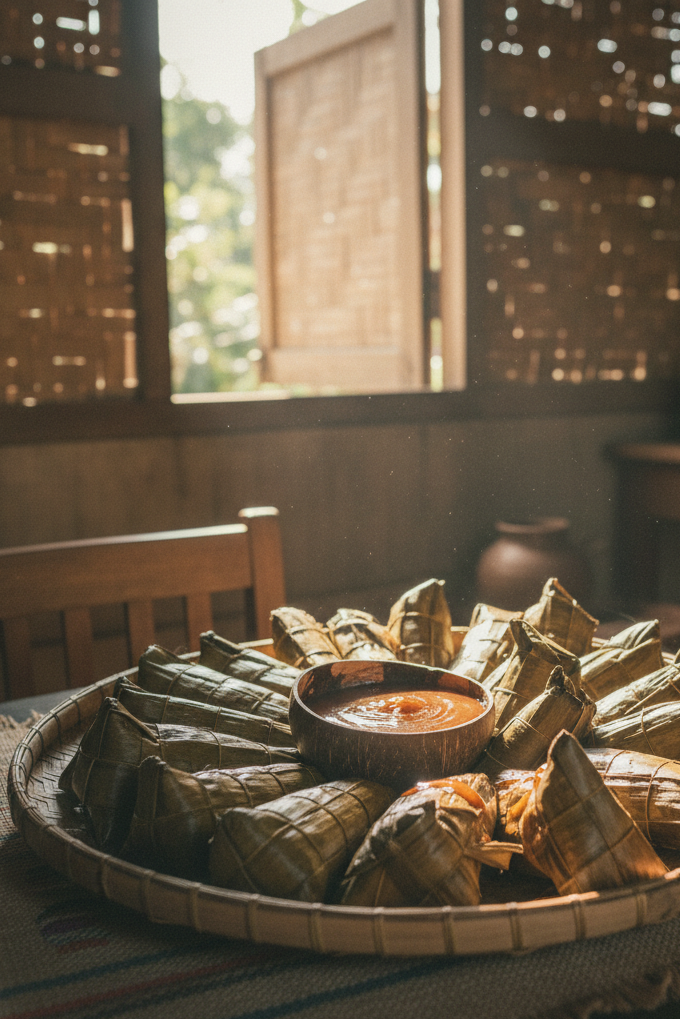
Simple but full of heart, Suman is made of sticky rice wrapped in banana leaves and steamed slowly. It’s a humble offering often shared with coconut jam or ripe mangoes during family gatherings on November 1.
Kutsinta
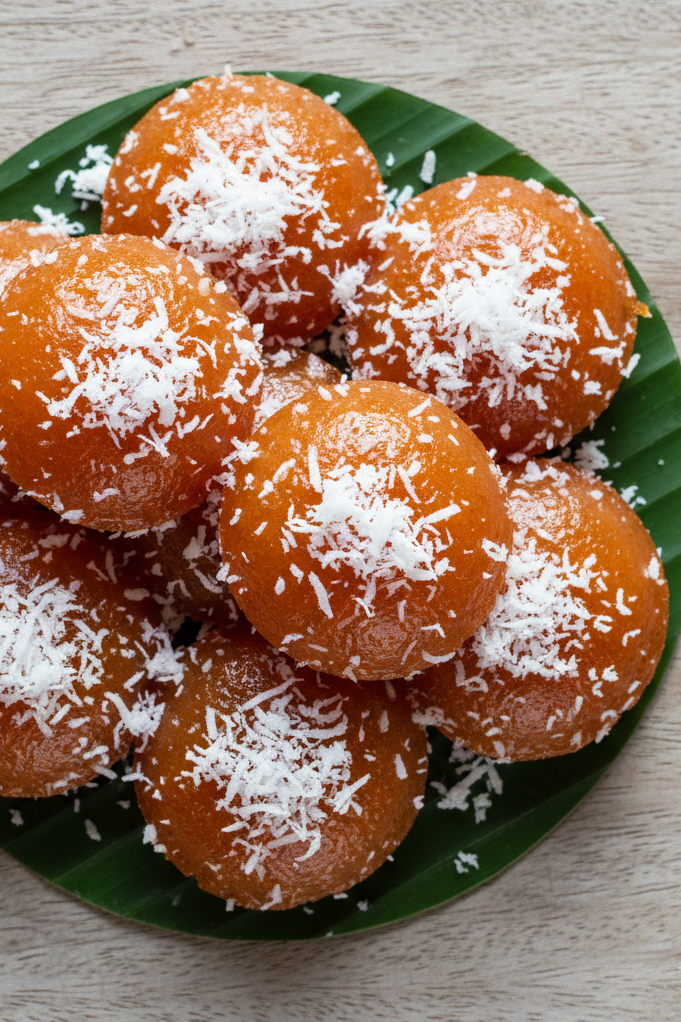
Chewy and caramel-brown, Kutsinta completes the kakanin trio. It’s a favorite snack among elders during Undas, symbolizing simplicity and togetherness.
Puto

A soft, fluffy steamed rice cake, Puto brings comfort to every Filipino table. It’s often paired with Dinuguan a combination of light and rich flavors shared during All Saints’ Day reunions.
Dinuguan
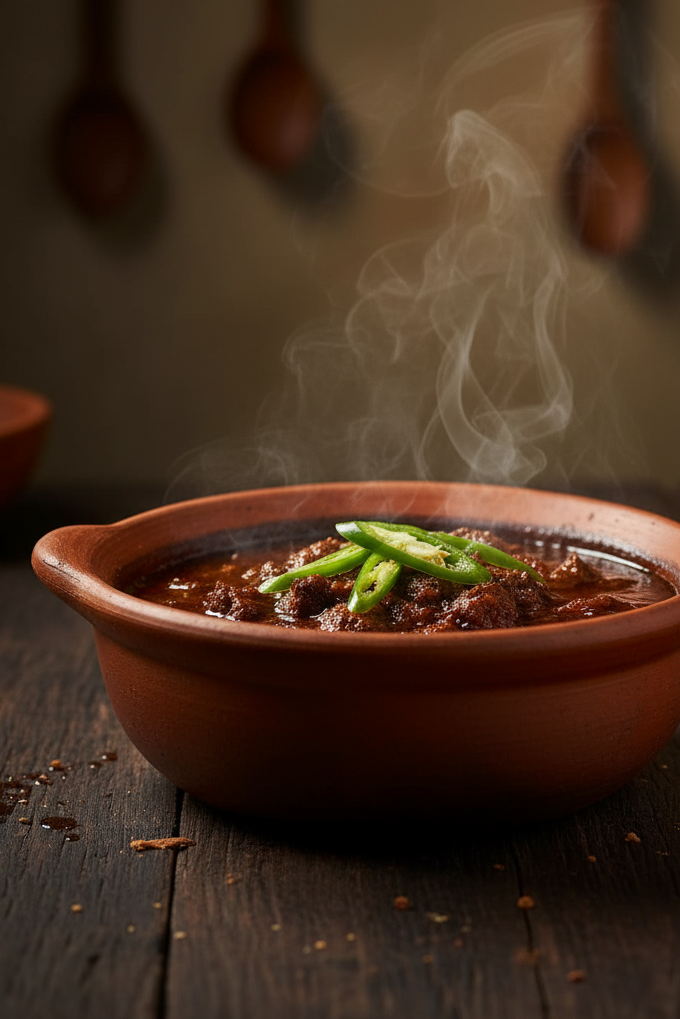
Known as “chocolate meat,” this savory stew made from pork, vinegar, and pig’s blood is a traditional family favorite. The rich, tangy sauce and tender meat make it unforgettable during Undas gatherings.
Pancit
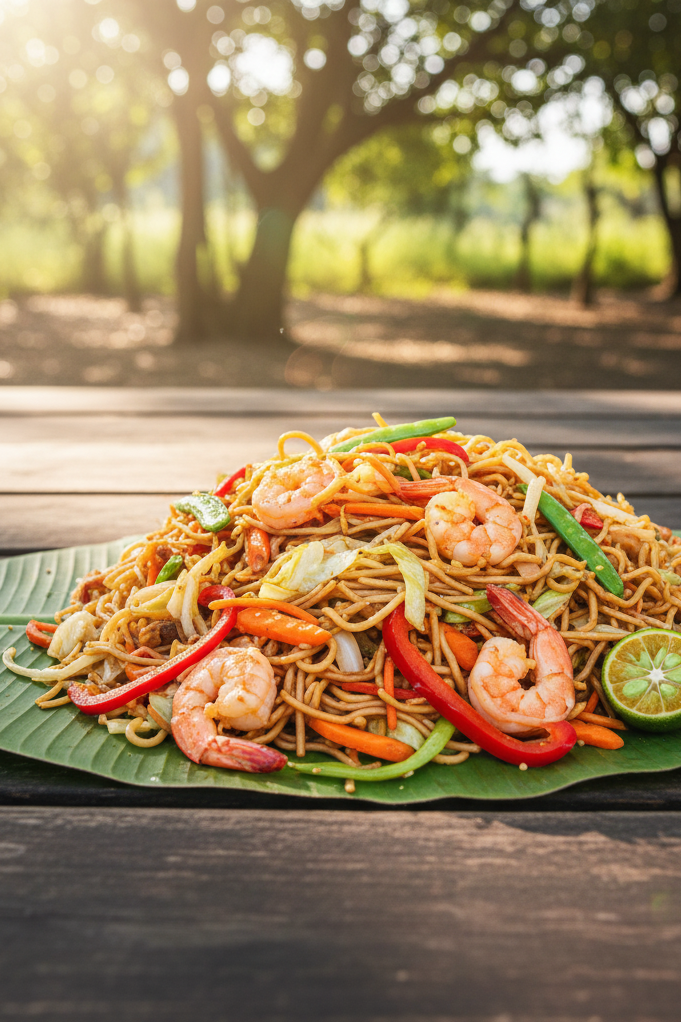
A symbol of long life and strong family ties, Pancit is always served to guests visiting on November 1. Whether it’s Pancit Canton or Pancit Bihon, it represents family unity and prosperity.
Adobo

The heart of Filipino cooking Adobo is savory, tangy, and timeless. Made with soy sauce, vinegar, and garlic, it’s a dish that every family cooks to share stories and memories on November 1.
Lumpiang Shanghai

Golden and crispy, Lumpiang Shanghai is always a crowd favorite during any Filipino gathering. Each bite is a taste of celebration and family joy.
Lechon
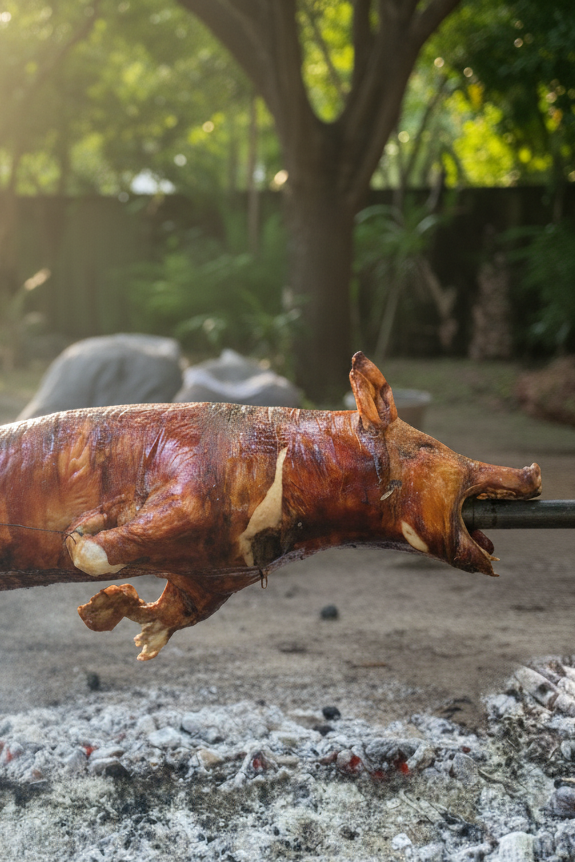
A grand Filipino tradition, Lechon represents unity, abundance, and festivity. It’s often the highlight of every family reunion on All Saints’ Day, a dish that brings everyone together.
Ginataang Bilo-Bilo

Sweet, creamy, and heartwarming, Ginataang Bilo-Bilo is a coconut milk dessert with sticky rice balls, bananas, and sweet potatoes a comfort food perfect for cool November evenings.
Conclusion
As November 1 brings families together to honor their loved ones, these traditional Filipino dishes remind us that food is more than just nourishment, it’s a bridge between generations, memories, and culture. Each bite carries the warmth of family gatherings, laughter, and love that never fades. Whether it’s a steaming bowl of pancit or the sweetness of kakanin, these flavors keep our traditions alive and our hearts full.
